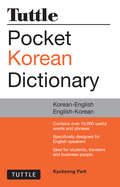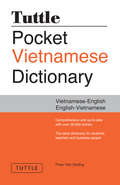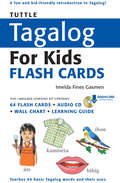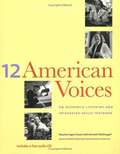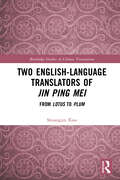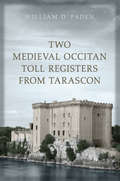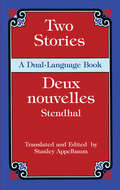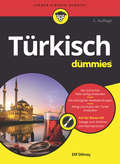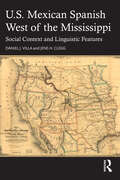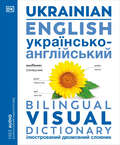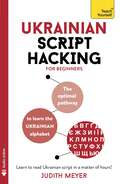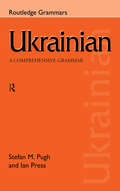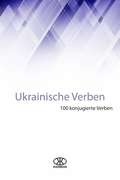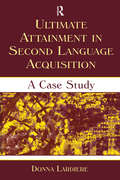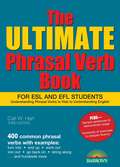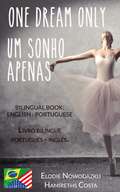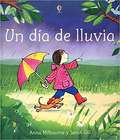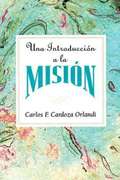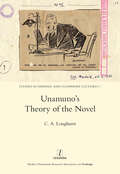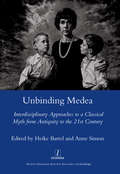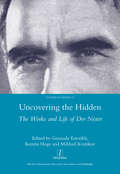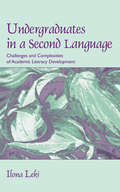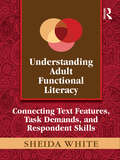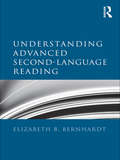- Table View
- List View
Tuttle Pocket Korean Dictionary: Korean-English English-Korean
by Kyubyong ParkIt's never a good idea to be overly-relient on technology while traveling! Look up words quickly and easily with this great Korean dictionary.<P><P>Intended for use by tourists, students, and business people travelling to Korea Tuttle Pocket Korean Dictionary is an essential tool for communicating in Korean. It features all the essential Korean vocabulary appropriate for beginning to intermediate students. It's handy pocket format and user-friendly, two color layout will make any future trip to Korea much easier. All entries are written in a Romanized form as well as Korean script (hangul) so that in the case of difficulties the book can simply be shown to the person the user is trying to communicate with.This dictionary includes the following key features: Over 18,000 words and expressions in the Korean language. Korea-English and English-Korean sectionsFully updated with recent vocabulary and commonly used South Korean slang. Clear, user friendly layout with headwords in blue. Romanized and Korean Script (hangul) for every entry.Other books from this bestselling series you might enjoy include: Pocket Japanese Dictionary, Pocket Mandarin Chinese Dictionary, and Pocket Cantonese Dictionary.
Tuttle Pocket Vietnamese Dictionary: Vietnamese-English English-Vietnamese
by Phan Van GiuongThis is a pocket sized Vietnamese DictionaryIntended for use by tourists, students, and business people traveling to Vietnam Pocket Vietnamese Dictionary is an essential tool for communicating in Vietnamese. <P><P> It features all the essential Vietnamese vocabulary appropriate for beginning to intermediate students. It's handy pocket format and easy-to read type will make any future trip to Vietnam much easier. In addition to being an excellent English to Vietnamese dictionary and Vietnamese to English dictionary Pocket Vietnamese Dictionary contains important notes on the Vietnamese language, Vietnamese grammar and Vietnamese pronunciation. All Vietnamese words are written in Romanized Vietnamese so that in the case of difficulties the book can simply be shown to the person the user is trying to communicate with.This dictionary contains:The 3,000 most commonly used words in the Vietnamese languageAn introduction to and history of the Vietnamese languageInformation on Vietnamese grammarA guide to pronouncing Vietnamese correctlyOther books from this bestselling series you might enjoy include: Pocket Cambodian Dictionary, Pocket Thai Dictionary, Pocket Indonesian Dictionary, and Pocket Malay Dictionary.
Tuttle Tagalog for Kids Flash Cards Kit
by Imelda Fines GasmenA fun and kid-friendly introduction to Tagalog!<P><P>The Tuttle Tagalog for Kids Flash Cards kit is an introductory language learning tool especially designed to help children from preschool through early elementary level acquire basic words, phrases, and sentences in Tagalog in a fun and easy way.The flashcards can be used as a learning tool in a classroom setting, at home, or anywhere that learning takes place. The set contains a total of 64 words organized into thematic categories, including: My Family, Colors, Numbers, Animals, Food, My Body, Clothes, and My Day. All of the words are illustrated-the pictures serve as effective visual aids to help children learn and remember each word's meaning. Words often reflect cultural objects and items and can be studied in any order. Learners may focus on one theme at a time or mix them up for a little more variety.A downloadable audio CD provides native pronunciation of the words, and sample sentences for practice, as well as songs and other activities. Also included is a wall chart featuring the front of each card for kids to review and a learning guide for teachers and/or parents with tips, activities and more!
Twelve American Voices: An Authentic Listening and Integrated-skills Textbook
by David Isay Maurice Cogan Hauck Kenneth MacdougallThis book was written to help students improve their English and to explore American culture.
Two English-Language Translators of Jin Ping Mei: From Lotus to Plum (Routledge Studies in Chinese Translation)
by Shuangjin XiaoTwo English-Language Translators of Jin Ping Mei examines English translations of the Ming novel Jin Ping Mei by translators from different historical periods within the Anglophone world.Drawing upon theoretical insights from translation studies, literary criticism, and cultural studies, the book explores the treatment of salient features of the novel in translation, including cultural representation, narratological elements, gender-specific motifs, and (homo)sexual themes. Through literary re-imagining and artistic re-creation, Egerton transforms a complex and sprawling narrative into a popular modern middlebrow novel, making it readily accessible within Western genres. Roy’s interlinear and annotated translation transcends the mere retelling of a vivid story for its unwavering emphasis on every single detail of the original, becoming a portal to the Ming past. It stands as a testament to the significance of translation as a medium for understanding the legacy of the late Ming and the socio-cultural dynamics shaping that period in Chinese history.This book will be a useful reference for scholars and research students within the fields of literary translation studies and translated Chinese literature, particularly Ming- Qing fiction. The book will also appeal to students and researchers studying Jin Ping Mei’s translation and reception in the West.
Two Medieval Occitan Toll Registers from Tarascon
by William D. PadenTwo Medieval Toll Registers from Tarascon presents an edition, translation, and discussion of two vernacular toll registers from fourteenth and fifteenth-century Provence. These two registers are a valuable new source for the economic, linguistic, and transportation history of medieval France, offering a window onto the commercial life of Tarascon, a fortified town on the east bank of the Rhône between Avignon and Arles. William D. Paden discusses the developing fiscal policy of the counts of Provence, for whom the tolls were collected, and the practice and vocabulary of medieval toll-keeping. An afterword considers the toll registers in relation to the poetry of troubadours, arguing that the realism of the registers and the idealism of troubadour poetry overlapped in the world of medieval Tarascon.
Two Stories/Deux nouvelles: A Dual-Language Book
by Stendhal Stanley AppelbaumIn writing these two ardently romantic and turbulent tales, Stendhal delved deep into old Italian narratives and into his own impassioned heart. "Vanina Vanini" and "L'abbesse de Castro" abound in the qualities for which the French author remains enduringly popular: his strong-willed, impulsive characters; his dry wit and keen irony; and the sweeping drama of his historical settings. Originally published in the Revue de Paris in 1829, "Vanina Vanini" traces the fortunes of an aristocrat's daughter who falls in love with a wounded soldier, and prefigures Stendhal's superb novel, The Red and the Black, which appeared two years later. "L'abbesse de Castro," published in 1839 under a pseudonym in the prestigious Revue des Deux Mondes, was reputedly derived from Roman and Florentine source manuscripts. Consisting chiefly of Stendhal's own invention, it recounts the illicit liaison and subsequent trial of an abbess.The only dual-language edition of these stories, this book features an informative introduction and ample footnotes, making it not only a pleasure to read but also a valuable learning and teaching aid for students and teachers of French literature.
Türkisch für Dummies (Für Dummies)
by Elif Dilmaç»Türkisch für Dummies« bietet einen leichten Einstieg in die türkische Sprache. Los geht's mit einer Einführung in die Besonderheiten der türkischen Sprache, in die Betonung sowie in die Grammatik einschließlich der Fälle. Dann wird es auch schon praktisch: Jedes Kapitel beschäftigt sich mit einer Alltagssituation: Sie lernen, wie Sie sich auf Türkisch vorstellen, Small Talk führen, telefonieren und vieles mehr. Dabei lernen Sie die wichtigsten Sätze, Umschreibungen und Begriffe, die Sie im Alltag benötigen und bekommen nebenbei viele Informationen zu Alltag und Kultur in der Türkei. Im Anhang des Buches finden Sie Verb-Tabellen und ein kleines Türkisch-Deutsch-/Deutsch-Türkisch-Wörterbuch. Auf der beiliegenden CD gibt es die Sprachübungen aus dem Buch zum Anhören und Nachsprechen.
U.S. Mexican Spanish West of the Mississippi: Social Context and Linguistic Features
by Daniel J. Villa Jens H. CleggU.S. Mexican Spanish West of the Mississippi proposes a macro-dialect of the most widely spoken Spanish variety in the western United States from a number of social and linguistic angles. This book is unique in its focus on this one variety of Spanish, which allows for a closer investigation of the social context and linguistic features through a number of different topics. Comprised of 13 chapters divided into two sections, this textbook provides insight into the history, demographics, migration, and social issues of US Mexican Spanish in the first section and its lexicography, phonology, and structure in the second. Useful for scholars interested in Spanish in the United States, dialectology, and sociolinguistics, this is also an ideal resource for advanced undergraduate and graduate students of Spanish.
Ubik (Mandarin Edition)
by Philip K. DickFrom the stuff of space opera, Dick spins a deeply unsettling existential horror story, a nightmare you'll never be sure you've woken up from. 乔*奇普为格伦*朗西特的反超能咨询公司工作 保护人们免受通灵师和先知的心灵窥探 在一次前往月球执行任务的过程中 朗西特的行动组遭遇埋伏 朗西特身亡 行动组成员迅速将朗西特的遗体送往苏黎世的亡灵馆冰冻冷藏 并试图与他的大脑取得联系 然而 不仅没有成功联系上朗西特 行动组成员还发现 钱币,香烟等物品均在发生退转 时光似乎在往回倒流 究竟发生了什么事 这是一个让人深感不安的生存恐怖故事 一场你不知道自己是否还会醒过来的噩梦
Ukrainian - English Bilingual Visual Dictionary (DK Bilingual Visual Dictionaries)
by DKWith more than 6,750 fully illustrated words and phrases in Ukrainian and English, along with a free bilingual audio app, DK's Ukrainian-English Bilingual Visual Dictionary is your essential companion to learning Ukrainian.You will learn all the words and phrases you need to buy food and clothes, talk about work and education, visit the doctor, go to the bank, use public transportation, and much more. Perfect for students, tourists, and business travelers, the dictionary is incredibly easy to follow, with thematically organized vocabulary so you can find closely related words on a particular topic. Words and phrases are illustrated with full-color photographs and artwork, helping to fix new vocabulary in your mind. The supporting audio app enables you to hear all the words and phrases spoken out loud in both languages to help you learn, remember, and pronounce important vocabulary.
Ukrainian Script Hacking: The optimal pathway to learn the Ukrainian alphabet
by Judith MeyerUsing a unique, tried and tested algorithm, this book teaches you how to quickly and efficiently recognise letters and common words in Ukrainian script. Whether you need to quickly be able to read and understand the words around you, or are preparing to learn Ukrainian and want to master the basics, this is the book for you. In this book you will find: · An introduction to Ukrainian script and the Cyrillic alphabet · Plenty of practice activities to help you recognise each letter of the alphabet · Helpful mnemonics to make you remember the shape of each letter · Accompanying audio files so you know how to pronounce letters and words · Handy tips to help you decipher common and familiar words The audio for this course can be downloaded from the Teach Yourself Library app or streamed at library.teachyourself.com. Rely on Teach Yourself, trusted by language learners for over 85 years.
Ukrainian: A Comprehensive Grammar (Routledge Comprehensive Grammars)
by Ian Press Stefan PughUkrainian: A Comprehensive Grammar is a complete reference guide to modern Ukrainian grammar.The authors have consulted a great number of sources, in addition to a wide range of native speakers. The result is the first true reference grammar of Ukrainian to be published outside Ukraine, it will be the standard reference work for years to come.The volume is organized to enable students of the language to find the information they seek quickly and easily, and to promote a thorough understanding of Ukrainian grammar. It presents the complexities of the language in a systematic and user-friendly form.Features include* detailed tables in each chapter for easy reference* numerous examples throughout* thorough descriptions of all parts of speech* list of grammatical terms in English and Ukrainian* complete descriptions of the word-formational processes of Ukrainian* an overview of past and present changes in the language* bibliography of works relating to Ukrainian* full index.
Ukrainische Verben (100 Veben Serie #15)
by KarbidsSpeziell für elektronische Geräte geschrieben, hat ,Ukrainische Verben' eine Einführung in die Bildung aller Verbalzeiten im Ukrainischen, sowie 100 wesentliche Verben vollständig konjugiert mit ihrer Bedeutung. Dieses Buch ermöglicht es dem Benutzer, im gesamten Text zu suchen, da es keine Bilder oder verschwindenden oder unleserlichen Text hat.
Ultimate Attainment in Second Language Acquisition: A Case Study
by Donna LardiereThe first book-length treatment of its type, Ultimate Attainment in Second Language Acquisition is a case study with a solid theoretical grounding that examines the language of an immigrant learner of English, and thereby presents a much needed understanding of the linguistic competence of second language speakers. Based on longitudinal data collected over a period of 16 years, this clear and accessible presentation is well-grounded in linguistic theory and in second language acquisition research issues. Author Donna Lardiere presents the narrative of Patty, an adult Chinese immigrant learner of English, who achieves native-like proficiency in some areas of her English idiolect, although reaches a plateau in her language acquisition, known as the concept of fossilization. By addressing this concept, a central idea in second language acquisition research, Lardiere fills a void in existing literature. Individual chapters focus on Patty’s end state knowledge of grammatical areas of finiteness, past-tense marking, word order, wh-movement and relativization, passivization, number marking, and use of determiners. Important topics discussed throughout the book include:*learner variability in production;*case study methodology;*the roles of motivation and prior language (L1) knowledge; and*sensitivity to input in circumscribing ultimate attainment in adult second language acquisition. Ultimate Attainment in Second Language Acquisition is intended for anyone whose research is in the areas of second language acquisition, language acquisition, theoretical, applied, or developmental linguistics. It is also appropriate for graduate level students of TESOL and teachers who work with more advanced learners of foreign languages.
Ultimate Phrasal Verb Book, 3rd edition: For Esl And Efl Students
by Carl W. HartUpdated to reflect questions found on the most recent ESL tests, this book presents 400 common phrasal verbs as they are used in everyday English. Phrasal verbs are verbs combined with prepositions or adverbs. Familiarity with phrasal verbs and understanding their use as nouns (breakup, showoff, etc.) or adjectives (spaced-out, broken-down, stressed-out, and many others) is essential to ESL students. Updated information includes: the most commonly used phrasal verbs; activities and examples that reflect our current technology and the world around us; an expanded introduction for the teacher with a thorough breakdown and explanation of phrasal verbs; and, a discussion of separable and inseparable phrasal verbs in Unit I, and more. This book’s hundreds of examples in context and hundreds of exercises will be extremely useful to ESL students who are preparing for TOEFL or who simply wish to improve their English.
Um Sonho Apenas/One Dream Only (Livro bilíngue: Português - Inglês)
by Elodie Nowodazkij Hamíreths CostaEstá aprendendo inglês? Are you learning Portuguese? This book can help you with that: one page in English, one page in Portuguese... Este livro pode te ajudar: uma página em inglês e outra em português... She thought she was on her way to the top... Sixteen-year-old Natalya Pushkaya has one dream and one dream only: becoming the best ballerina ever.Dancing's always been who she is and she's working her hardest to land the main role of the School of Performing Arts' end-of-the-year showcase. But...will she make it? Within a week, Natalya's life will be changed forever. ------------------------------------- Ela achava que estava a caminho do topo... Natalya Pushkaya de 17 anos tem um sonho apenas: se tornar a melhor bailarina do mundo. Dançar sempre foi o que ela é e ela está trabalhando duro para conseguir o papel principal no show de final de ano da Escola de Artes Cênicas. Mas ela vai conseguir? Em uma semana a vida de Natalya vai mudar para sempre.
Una introducción a la misión AETH: An Introduction to Missions Spanish
by Carlos F. Cardoza-Orlandi"La iglesia existe por la misión, al igual que el fuego existe por la combustión". Con estas palabras de Emil Brunner, el autor nos recuerda que ser la iglesia es estar en misión. Después de describir las diferentes cautividades de la misión, que han subyugado al cristianismo de los Estados Unidos, el autor lucha para exponer una fuerte y comprometida practica de la misión, comenzando en las congregaciones locales y extendiéndose hasta la comunidad más amplia.Este libro de Introducción a la Misión, puede ayudar a estudiantes de seminario, y a grupos de estudio de laicos, a conocer el mandato cristiano fundamental y unirse a la misión de Dios en el mundo."The church exists by mission as fire exists by burning." With these words of Emil Brunner, the author reminds us to be the church, is to be in mission. After describing the various captivities of the mission, which subjugated to Christianity in the United States, the author struggles to expose a strong and committed practice of mission, beginning in local congregations and extending to the broader community. This book Una Introduccion a la Mision can help seminary students and lay study groups to learn the fundamental Christian mandate and join God's mission in the world.
Unamuno's Theory of the Novel
by C.A. LonghurstMiguel de Unamuno (1864-1936) is widely regarded as Spain's greatest and most controversial writer of the first half of the twentieth century. Professor of Greek, and later Rector, at the University of Salamanca, and a figure with a noted public profile in his day, he wrote a large number of philosophical, political and philological essays, as well as poems, plays and short stories, but it is his highly idiosyncratic novels, for which he coined the word nivola, that have attracted the greatest critical attention. Niebla (Mist, 1914) has become one of the most studied works of Spanish literature, such is the enduring fascination which it has provoked. In this study, C. A. Longhurst, a distinguished Unamuno scholar, sets out to show that behind Unamuno's fictional experiments there lies a coherent and quasi-philosophical concept of the novelesque genre and indeed of writing itself. Ideas about freedom, identity, finality, mutuality and community are closely intertwined with ideas on writing and reading and give rise to a new and highly personal way of conceiving fiction.
Unbinding Medea
by Heike BartelMedea - simply to mention her name conjures up echoes and cross-connections from Antiquity to the present. The vengeful wife, the murderess of her own children, the frail, suicidal heroine, the archetypal Bad Mother, the smitten maiden, the barbarian, the sorceress, the abused victim, the case study for a pathology. For more than two thousand years, she has arrested the eye in paintings, reverberated in opera, called to us from the stage. She demands the most interdisciplinary of study, from ancient art to contemporary law and medicine; she is no more to be bound by any single field of study than by any single take on her character. The contributors to this wide-ranging volume are Brian Arkins, Angela J. Burns, Anthony Bushell, Richard Buxton, Peter A. Campbell, Margherita Carucci, Daniela Cavallaro, Robert Cowan, Hilary Emmett, Edith Hall, Laurence D. Hurst, Ekaterini Kepetzis, Ivar Kvistad, Catherine Leglu, Yixu Lue, Edward Phillips, Elizabeth Prettejohn, Paula Straile-Costa, John Thorburn, Isabelle Torrance, Terence Stephenson, and Amy Wygant.
Uncovering the Hidden: The Works and Life of Der Nister
by Gennady EstraikhDer Nister (Pinkhes Kahanovitsh, 1884-1950) is widely regarded as the most enigmatic author in modern Yiddish literature. His pseudonym, which translates as 'The Hidden One', is as puzzling as his diverse body of works, which range from mystical symbolist poetry and dark expressionist tales to realist historical epic. Although part of the Kiev Group of Yiddish writers, which also included David Bergelson and Peretz Markish, Der Nister remained at the margins of the Yiddish literary world throughout his life, mainstream success eluding him both in- and outside the Soviet Union. Yet, to judge from the quantity of recent research and translation work, der Nister is today one of the best remembered Yiddish modernists. The present collection of twelve original articles by international scholars re-examines Der Nister's cultural and literary legacy, bringing to light new aspects of his life and creative output.
Undergraduates in a Second Language: Challenges and Complexities of Academic Literacy Development
by Ilona LekiThis is the first book-length study of bilingual, international, and immigrant students in English writing courses that attempts to fully embed their writing experiences within the broader frame of their personal histories, the human context of their development, and the disciplinary contexts of their majors. It addresses the questions: How useful are L2 writing courses for the students who are required to take them? What do the students carry with them from these courses to their other disciplinary courses across the curriculum? What happens to these students after they leave ESL, English, or writing classes? Drawing on data from a 5-year longitudinal study of four university students for whom English was not their strongest/primary language, it captures their literacy experiences throughout their undergraduate careers. The intensive case studies answer some questions and raise others about these students’ academic development as it entwined with their social experiences and identity formation and with the ideological context of studying at a US university in the 1990s.
Understanding Adult Functional Literacy: Connecting Text Features, Task Demands, and Respondent Skills
by Sheida White"This is a genuinely scholarly work ... It is based on [analysis of] the most up-to-date quantitative surveys that we have on adult literacy. These surveys are the gold standard in terms of documenting adult literacy in the United States ...The author analyzes these extensive surveys and puts them into a theoretical context in a way that has not been done before." – Rosemary J. Park, University of Minnesota "I don’t know of any book providing the same information. There is a shortage of literature in this area and the book is an excellent contribution." – Dolores Perin, Teachers College, Columbia University "The contribution of the theory is important – not only to adult literacy but to our understanding of the reading process at nearly every level ... Additionally, the application of multidimensional item response modeling to the new TTR theory offers a tantalizing view of how the predictive validity of a theory might be tested and used to provide practical results." – Larry Mikulecky, Indiana University Very often, individual differences in literacy performance are understood exclusively in terms of the characteristics of the reader. Drawing on a rich array of empirical research, the author presents a detailed and highly integrative new theory of functional literacy. The text-task-respondent (TTR) theory of functional literacy offers improved understanding of how successful performance on everyday literacy tasks involves a dynamic relationship among the text, the task, and the reader. This book will appeal primarily to assessment developers who wish to select tasks and texts of varying difficulty to yield more precise estimates of adult literacy; to researchers who study cognitive, linguistic, and discourse processes; and to teachers who want to find new ways to increase text comprehension among students, including English language learners and struggling readers. The text is appropriate for an advanced course in adult education, discourse analysis, educational measurement, educational psychology, literacy, or linguistics – or as a reference work for those interested in literacy.
Understanding Advanced Second-Language Reading
by Elizabeth B. BernhardtWhat distinguishes this book is its broad, yet thorough, view of theory, process, and research on adult second-language reading. Offering extensive discussions of upper-register second-language texts (both expository and narrative) that adult second-language readers encounter daily across the globe, it also presents an assessment schema for second-language text comprehension as well as for the assessment of teaching. Understanding Advanced Second-Language Reading: includes languages other than English in the discussion of second language reading is firmly anchored in a theory of second language reading ─ the concept of compensatory processing emphasizes the multi-dimensionality and dynamic nature of L2 reading development focuses on comprehension of upper-register literary texts balances theory and instructional practices. Filling the need for a coherent, theoretically consistent, and research-based portrait of how literate adolescents and adults comprehend, and learn to comprehend, at greater levels of sophistication and whether that ability can be enhanced by instruction, this is a must-have resource for reading and second-language researchers, students, and teachers.
